The Wing-T Screen Passing Game
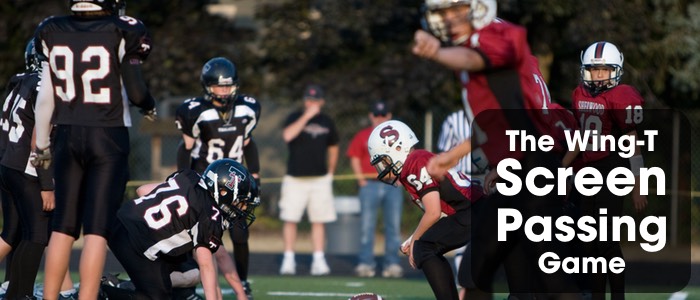
A screen passing component to the Wing-T can be powerful addition. Defenses will often pack the box and bring inside blitzes which can play right into the hands of a well executed screen play.
Two big challenges at the youth level are having the practice time to run screen plays well, and having a quarterback that can execute the play well given the timing nuances involved. Last season we waited to install a screen play until we put in our Pistol Wing-T package. Screen plays, especially quick receiver screens and tunnel screens, are much easier to execute from the shotgun. They are also much safer to throw because your much less likely to have a backwards pass.
While we installed two different screen plays, we only ran one during the season: a quick / tunnel screen to the wide receiver from a balanced double wing, pistol formation. The other screen we tried to install was a slow screen to the fullback, which was designed to be a progression play off a WR fake screen. We just couldn’t get the touch and timing right on the delivery to the FB so the play seemed too risky.
We didn’t have great success with this play, but we saw gradual improvement and I think if we’d been running it throughout the season (we only ran Pistol plays in 2 of our 9 games) I think it could have become one of our top passing plays. Let’s chart this one out, look at some film, and review my favorite drill for teaching the line how to block on the screen play.
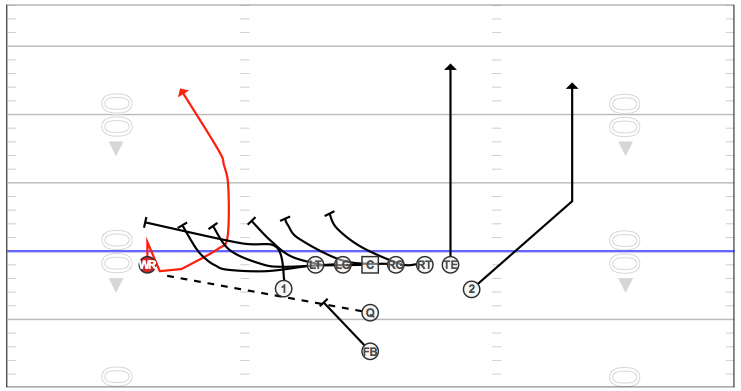
Here are the assignments and rules:
- The LT through RT (interior non-eligible linemen) execute an “out, up, in” block which I’ll get into later.
- TE (or WR if split) streaks and looks at 5 yards
- RHB / #2 back streaks to numbers if he’s with a TE or runs vertical route, looking at 5 yards
- FB protects to the left
- LFB / #1 starts to show a streak, then turns out to block the man on the WR (usually a CB)
- WR shows a streak by getting 1 yard down field, then comes back to where he started and turns in. He should turn inside (which puts him behind the blocking) then turn out to numbers at first opportunity.
- QB “grips and rips” throwing the ball as soon as he can to the exact spot where the WR started
Let’s look at some film from this play going badly.
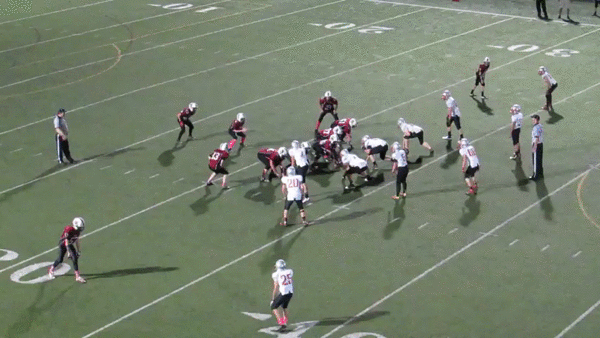
A few things happened here. The throw wasn’t very good - too high and the WR had to back up to catch, taking him away from his blocking. We never got a good block on the defensive end, and the WR didn’t turn in like he was supposed to. Their defensive tackle on the back side did a great job pursuing the play.
This next one looks a bit better.
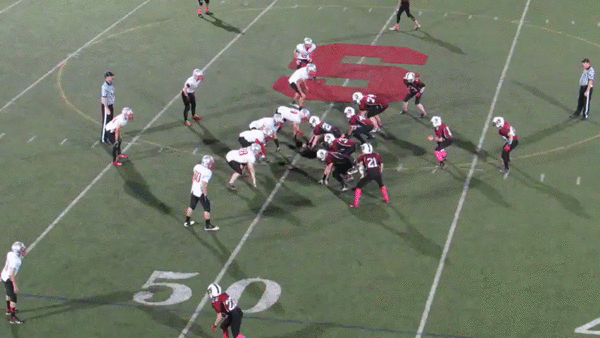
If the receiver just stays inside behind his blockers, this easily becomes a 10–15 yard gain. The release from the offensive line was very good. The wingback did a better than average job blocking the corner, and it is clearly not his fault that the CB ends up making the tackle.
Let’s look at the final film clip.
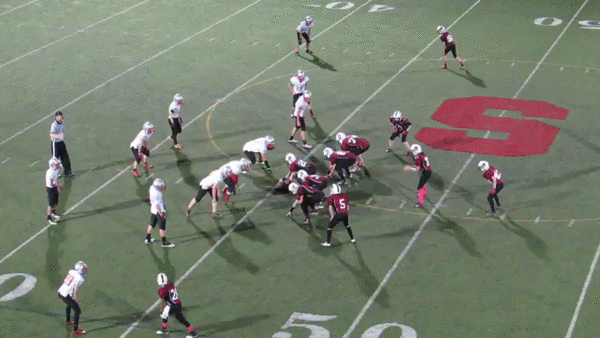
This screen resulted in a decent 5 yard gain and I think the WR finally executed his after-catch running path correctly. Watch the left tackle on his release - his rule is “out, up, in” and he unfortunately didn’t finish his task.
The “out, up, in” rule goes like this:
- First the blocker looks out towards the sideline – is there an unblocked defender? If yes, block him out toward the sideline.
- Next, he looks straight ahead downfield (I know we say “Up”, but it makes sense to the kids this way) – is there an unblocked defender? If yes, block him downfield. Watch the center and left guard (#25, #32) as they both do a decent job here. The right tackle (#74) mostly whiffs on his attempt.
- Finally, look back in towards the middle of the field. Usually the back side of the line is going to find linebackers or chasing defensive linemen here, and they need to block them back to the middle.
It takes practice and very specific drills to get linemen ready to block in space like this. Wing-T guards are usually well prepared for obvious reasons, but as you can see in the film the tackles often struggle. I use the cage drill, which I think I learned from Coach B Dud as my primary screen blocking drill.
This drill is helpful for more than just the screen game as it can be used to reinforce techniques for blocking in space for any player in any situation. You can make the cage bigger to make it a tougher challenge for the blocker, and in full pads this is a nice limited contact drill that gets the players competing. I ran a no-pad version of this drill at my clinic last weekend and you can see some film below.